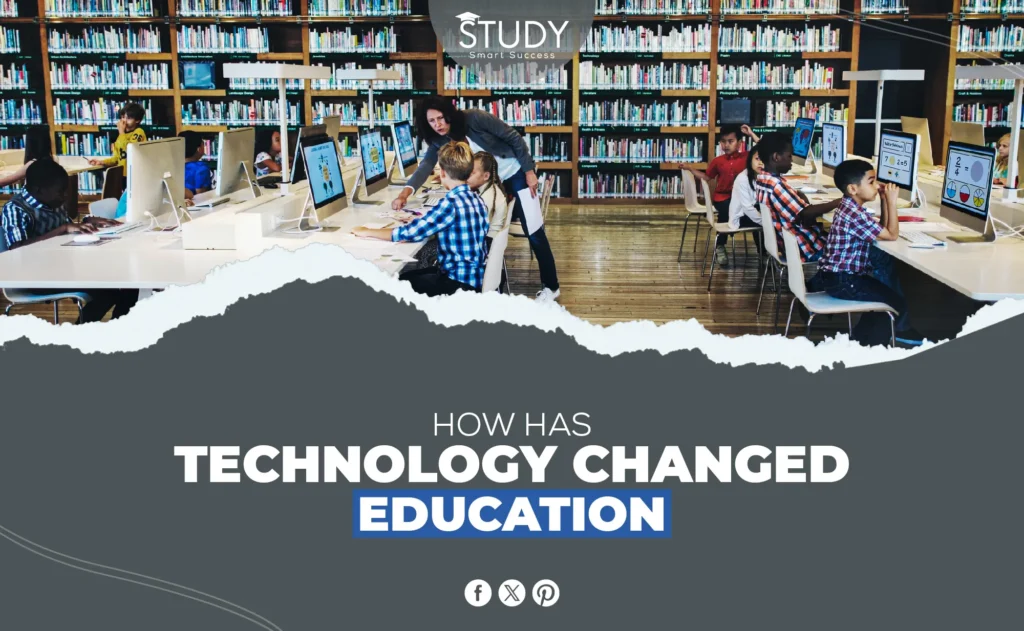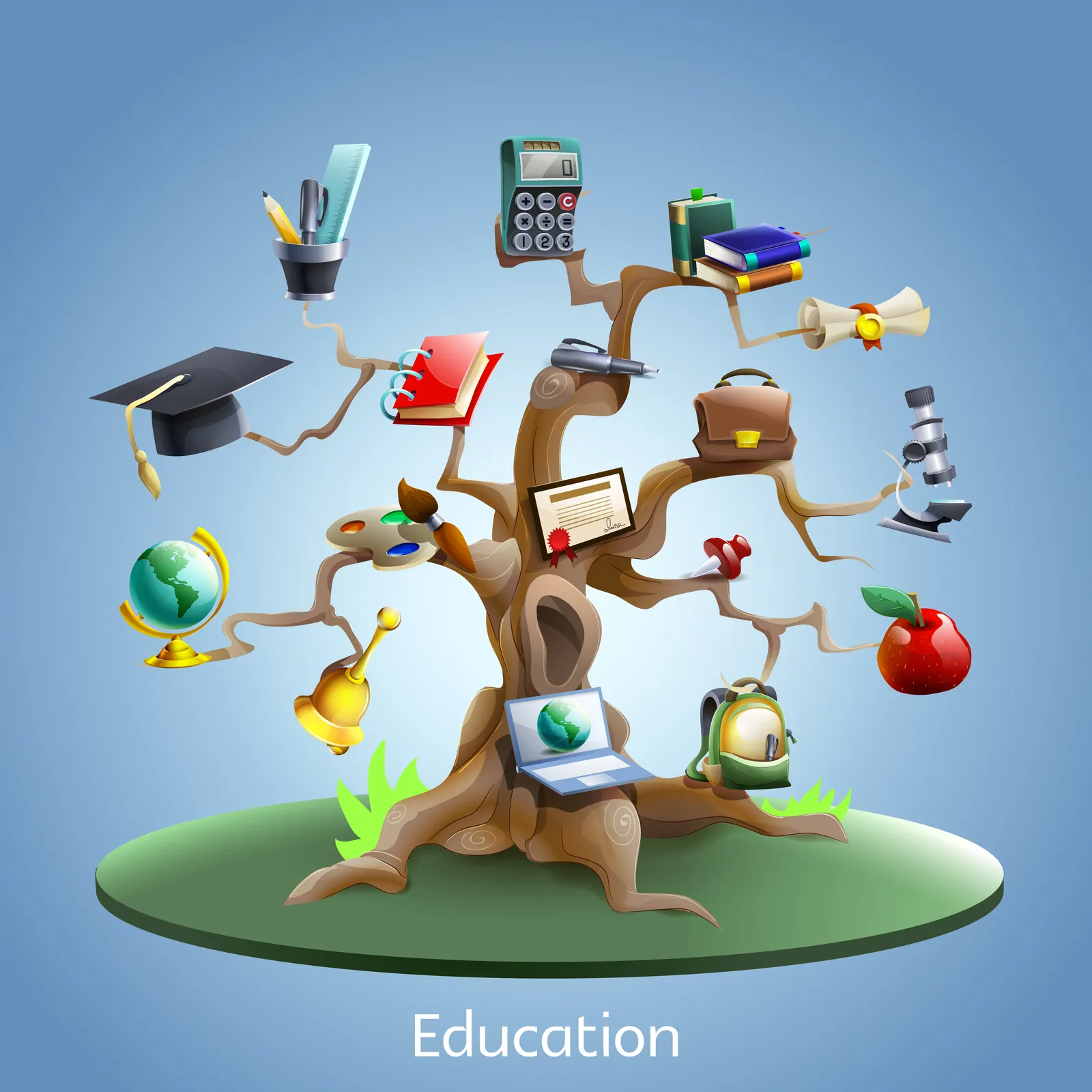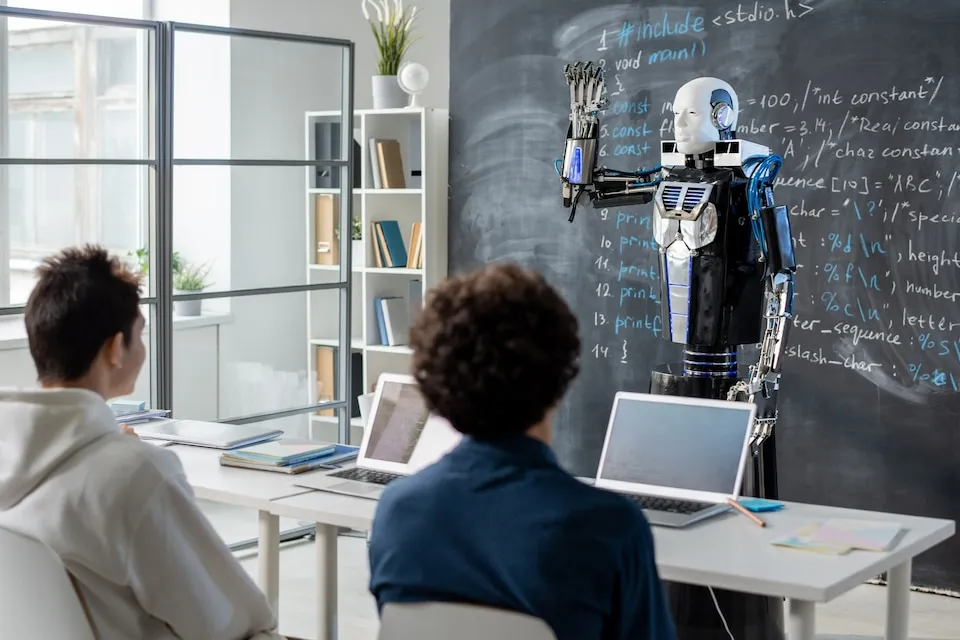Introduction
Technology in education has transformed teaching and learning in recent decades. Digital tools and resources have transformed chalkboard and textbook classes. This change has changed how knowledge is taught, access to education, and educator and student responsibilities. In this blog, we’ll discuss How technology has changed Education to be inclusive, individualized, and effective for all stakeholders. You need to read about What is One Negative Effect Technology has had on Education.
By the way, technology has profoundly and robustly impacted education, so we have divided it into five parts. Here are the five most essential initiatives we can consider as the answer to how technology has changed education.
Five Initiatives of how technology has changed education
- Enhancing Learning Experiences
- Expanding Access to Education
- Empowering Educators
- Addressing Challenges and Concerns
- Future Directions
Let’s dive into the details.
Enhancing Learning Experiences
Virtual Reality (VR) and Augmented Reality (AR):
Augmented reality (AR) and virtual reality (VR) tools have changed how students interact with schoolwork. VR lets students explore ideas and situations that were once only found in texts by putting them in virtual worlds.
Examples include virtual tours of historical places, and ocean dives to research marine life. Interactive AR experiences improve comprehension and retention by overlaying digital content in the actual environment. Education can be made more exciting and remembered for diverse learning styles by introducing VR and AR into the curriculum.
Interactive whiteboards and smart projectors:
Interactive whiteboards and smart projectors have made lectures more engaging. Teachers may easily show multimedia, annotate presentations, and lead group activities with these tools. Interactive whiteboards and bright projectors create a dynamic learning environment that engages and motivates pupils.
These tools also let teachers change how they teach to meet all their students’ needs, ensuring that every student has a chance to succeed.
Adaptive learning platforms:
Students receive tailored learning experiences using data analytics and machine learning algorithms from adaptive learning platforms. These platforms enhance learning outcomes by tailoring training and content to students’ strengths, limitations, and learning preferences.
Students can learn at their own pace and focus on areas where they need help with adaptive learning systems’ interactive quizzes, tutorials, and individualized study programs. These platforms also allow instructors to track student progress, detect learning gaps, and intervene, boosting academic success for all students.
Expanding Access to Education
Online courses and distance learning:
Online courses and distance learning have transformed education by removing geographical obstacles and giving quality education to remote students. Online platforms and virtual classrooms allow students to take classes worldwide without moving.
This flexibility lets students balance their job and family obligations. Distance learning programs also offer asynchronous learning, allowing students to study at their speed. Online and distance learning have democratized education by making it available to all.
Open educational resources (OER):
Open educational resources (OER) have democratized education by making textbooks, lectures, and other learning tools accessible. Unlike books, which can be expensive and unavailable to students, OER is free to use, adapt, and distribute.
This accessibility removes cost barriers to education and encourages global collaboration and knowledge sharing. OER includes textbooks, multimedia presentations, and interactive simulations for varied learning needs. Using OER, educators may tailor their lessons to students’ requirements and encourage sharing and cooperation.
Mobile learning:
Smartphones and tablets allow students to access educational content anytime, anywhere, transforming education. Mobile devices and high-speed internet allow students to learn on the go, during their commute, between courses, or at home.
There are many types of educational material on mobile learning platforms, such as interactive courses, educational apps, and multimedia content, so that they can fit the needs and styles of all learners.
Mobile devices allow educators to create exciting and dynamic learning experiences that empower students to take charge of their education. Mobile learning helps students and teachers collaborate and communicate, creating a multi-location learning community.
Empowering Educators
Data-driven insights:
Technology gives instructors data-driven insights into student performance, allowing them to adjust instructional tactics to various student needs. By tracking student progress, engagement, and learning outcomes, instructors can identify areas of weakness and alter their teaching approaches.
Learning management systems (LMS) can track student online activity involvement, while assessment tools can provide real-time performance feedback. With this information, instructors may target interventions, encourage struggling children, and push high-achieving pupils to succeed. Data can help instructors personalize and improve learning for all pupils.
Collaboration tools:
Technology helps educators and students collaborate more efficiently. Video conferencing, chat apps, and internet forums let instructors share information and prepare lessons and curricula.
Students can use these tools to work on group projects, discuss ideas, and ask for help from peers and professors. Technology encourages active learning, critical thinking, and problem-solving by fostering collaboration.
Collaboration tools also remove geographical boundaries, letting teachers and students connect with people from different cultures and backgrounds, which makes learning more fun for everyone.
Professional development:
Online courses and tools for professional development are available to educators because of technology. Teachers can take classes, watch webinars, and attend virtual seminars on pedagogy, curriculum design, technology integration, and classroom management through online platforms and learning communities.
These tools help teachers learn about new technologies and teaching methods, stay up to date on the latest studies and best practices in the field, and improve their teaching skills.
Online professional development is flexible and self-paced, helping instructors fit it into their busy schedules. Investing in professional development helps educators enhance student results, inspire lifelong learning, and grow personally and professionally.
Addressing Challenges and Concerns
The digital divide:
The digital gap is exacerbated by technology and internet access inequities, even while technology can improve education. Computers, tablets, smartphones, and reliable internet access at home are only available to some students.
This technology divide can expand the accomplishment gap between socioeconomic groups and limit their digital learning participation. Teachers and governments must collaborate to give all pupils equal access to technology and the internet.
It may include providing devices and internet access to underserved communities, bridging the digital gap, and teaching and supporting students and families to use digital tools and services.
Privacy and security:
As technology is interwoven into school, privacy and security concerns grow. Educational institutions must protect student data and privacy in digital learning settings. Encryption and access controls safeguard student data against illegal access and cyberattacks.
Educators should also use data correctly and by privacy rules. To address privacy concerns, educators should explicitly convey how student data is gathered, used, and secured. By prioritizing privacy and security, educators may build trust with children and parents and provide a safe learning environment.
Screen time and distractions:
Technology can improve learning, but too much screen time and digital distractions can harm pupils. Educators must balance technological integration with offline activities and attentiveness. Consider including screen-free activities in the curriculum, fostering digital literacy and responsible technology usage, and defining clear device use limits in the classroom.
Educators should encourage pauses and exercise to assist children in focusing and recharging. By promoting a balanced approach to technology use, educators may maximize its benefits while minimizing its effects on students’ attention and focus.
Future Directions
Artificial Intelligence (AI) in education:
Artificial intelligence (AI) technology could transform schooling. Predictive analytics can help teachers identify risky pupils and intervene early to avert academic problems. Adaptive learning systems use AI algorithms to tailor training to each student’s requirements and preferences, enhancing engagement and outcomes.
Interactive and personalized intelligent teaching solutions give pupils quick feedback and advice on complex ideas. AI can help schools build more efficient, effective, individualized learning experiences that help students succeed.
Block Chain technology:
Blockchain technology could make school credentialing and certification safer, transparent, and verifiable. Using blockchain technology, educational institutions may securely store and share tamper-proof digital credentials with students and employers. Blockchain certificates ensure academic legitimacy and integrity by recording achievements decentralized and immutably.
This lowers credential theft by eliminating paper transcripts. Blockchain technology lets students securely exchange their credentials with prospective companies or schools. Blockchain technology can streamline credentialing, improve trust and transparency, and allow students to demonstrate their talents and achievements.
Ethical considerations:
Technology in education must be ethically considered as it evolves. Teachers must utilize technology ethically, including data privacy, equity, and accessibility. This includes safeguarding sensitive student data, fostering digital equity to ensure all students have access to technology and the internet, and addressing bias and discrimination in algorithms and AI systems.
Pupils should also be taught critical thinking and digital citizenship to help them handle technology’s ethical issues. By addressing ethics in technology integration, educators can establish a safe, inclusive, and fair learning environment that benefits all students.
Conclusion
Technology has completely changed our learning, bringing us new challenges and possibilities. Technology has changed our teaching and learning from immersive virtual reality to personalized adaptive learning tools. This has made education more accessible and given teachers and students more power.
Technology’s full potential in education requires embracing innovation and tackling its drawbacks. Educators, politicians, and stakeholders must work together to responsibly and ethically use classroom technology to improve teaching and learning.
As technology in education evolves, let us strive for equality, accessibility, and excellence in learning for all. Technology can help students succeed in the digital age and prepare them for future challenges and opportunities by creating engaging, individualized, and equitable learning experiences. Let’s use technology to improve education and make it more inclusive.





